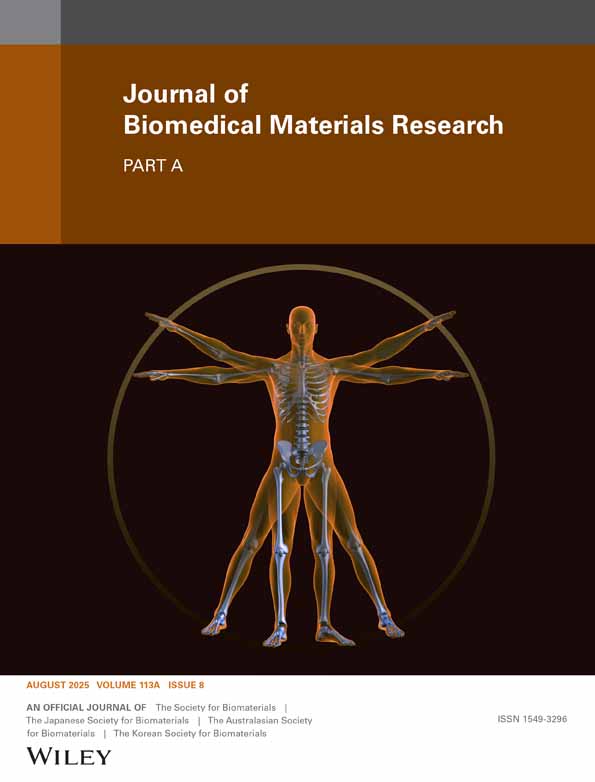Effect of bone sialoprotein coating of ceramic and synthetic polymer materials on in vitro osteogenic cell differentiation and in vivo bone formation
Abstract
In this study, we addressed whether Bone Sialoprotein (BSP) coating of various substrates could enhance the in vitro osteogenic differentiation and in vivo bone formation capacity of human Bone Marrow Stromal Cells (BMSC). Moreover, we tested whether synthetic polymer-based porous scaffolds, despite the absence of a mineral component, could support ectopic bone formation by human BMSC if coated with BSP. Adsorption of recombinant human BSP on tissue culture-treated polystyrene (TCTP), β-tricalcium phosphate (Osteologic™) or synthetic polymer (Polyactive™) substrates was dose dependent, but did not consistently accelerate or enhance in vitro BMSC osteogenic differentiation, as assessed by the mRNA expression of osteoblast-related genes. Similarly, BSP coating of porous β-tricalcium phosphate scaffolds (Skelite™) did not improve the efficiency of bone tissue formation following loading with BMSC and ectopic implantation in nude mice. Finally, Polyactive™ foams seeded with BMSC did not form bone tissue in the same ectopic assay, even if coated with BSP. We conclude that BSP coating of a variety of substrates is not directly associated with an enhancement of osteoprogenitor cell differentiation in vitro or in vivo, and that presentation of BSP on polymeric materials is not sufficient to prime BMSC functional osteoblastic differentiation in vivo. © 2009 Wiley Periodicals, Inc. J Biomed Mater Res, 2010




